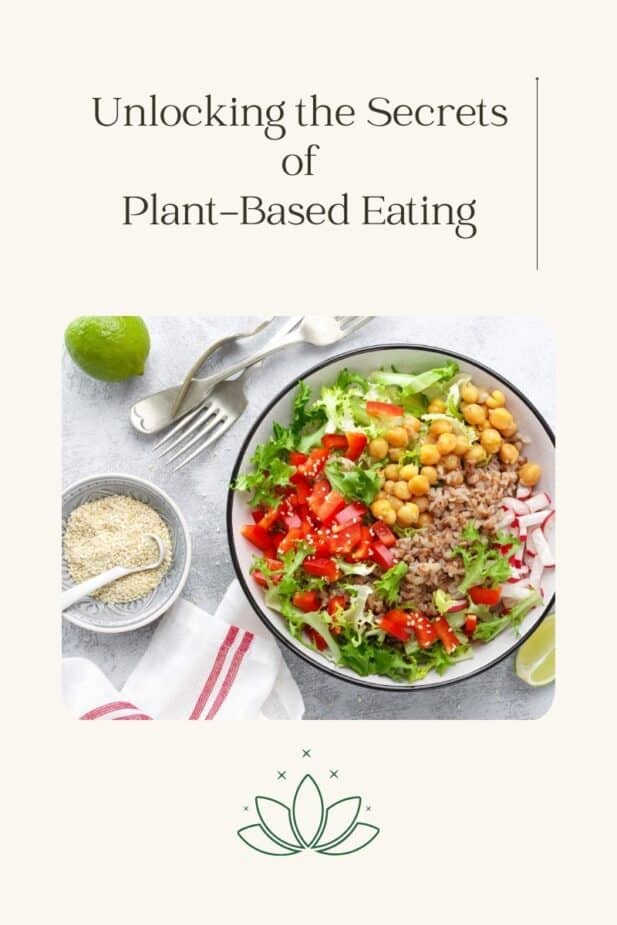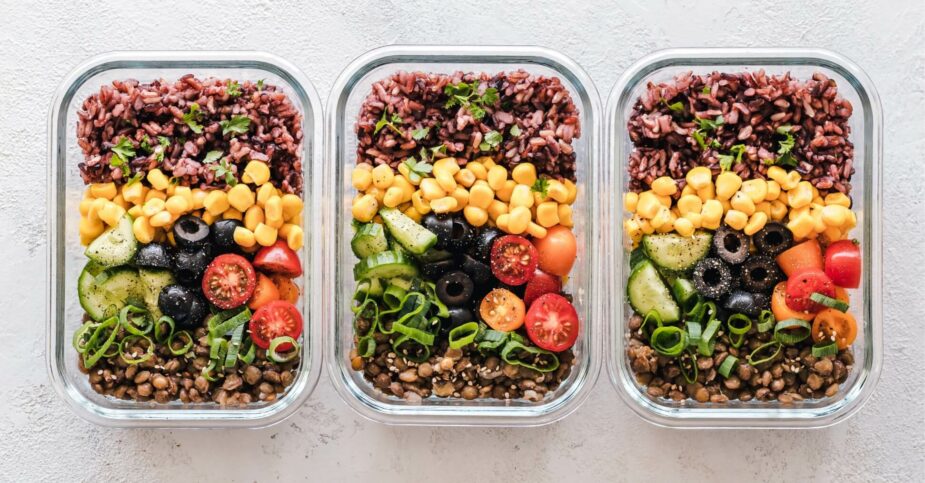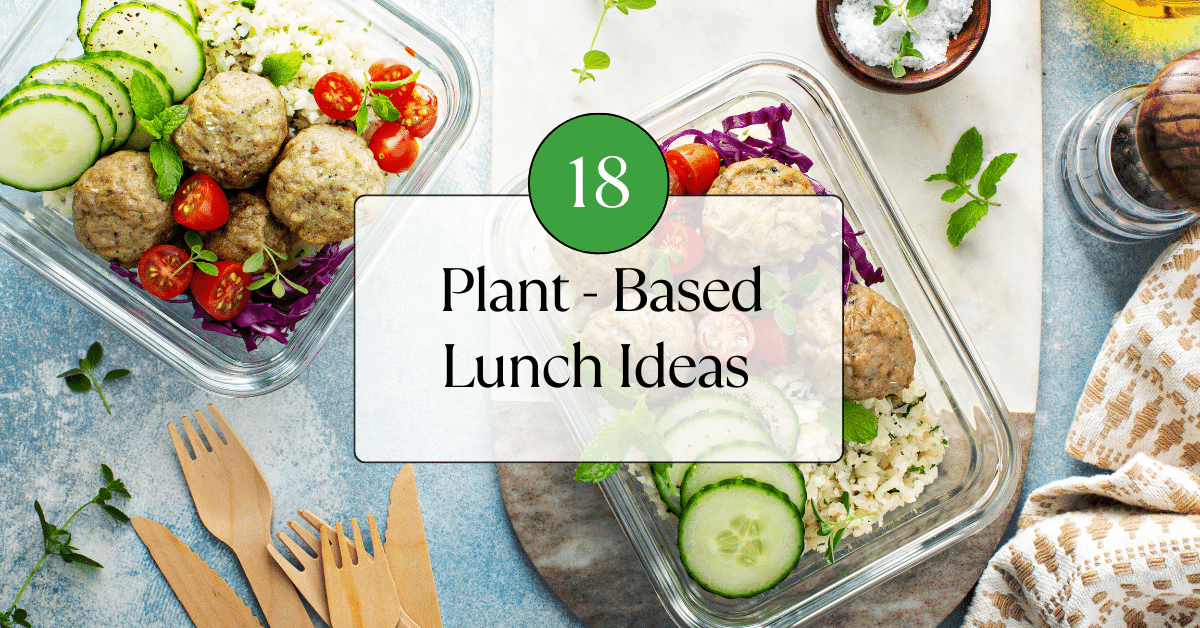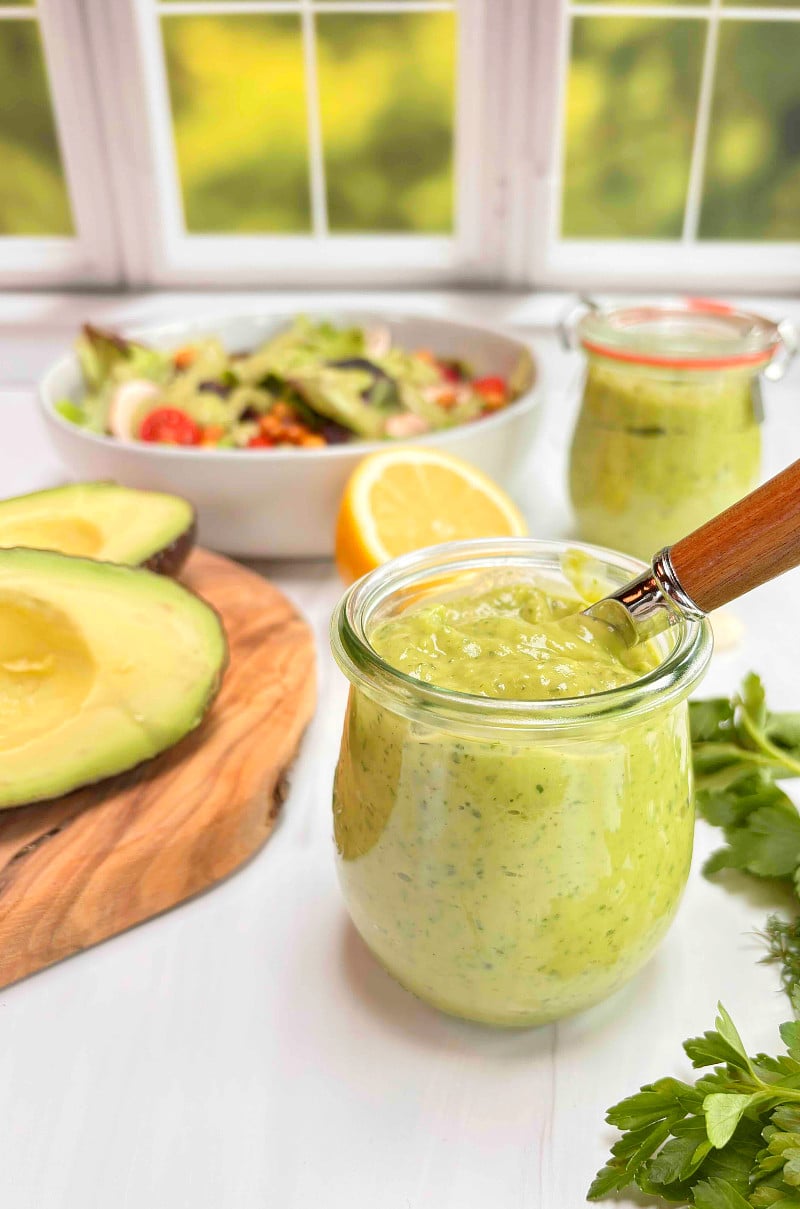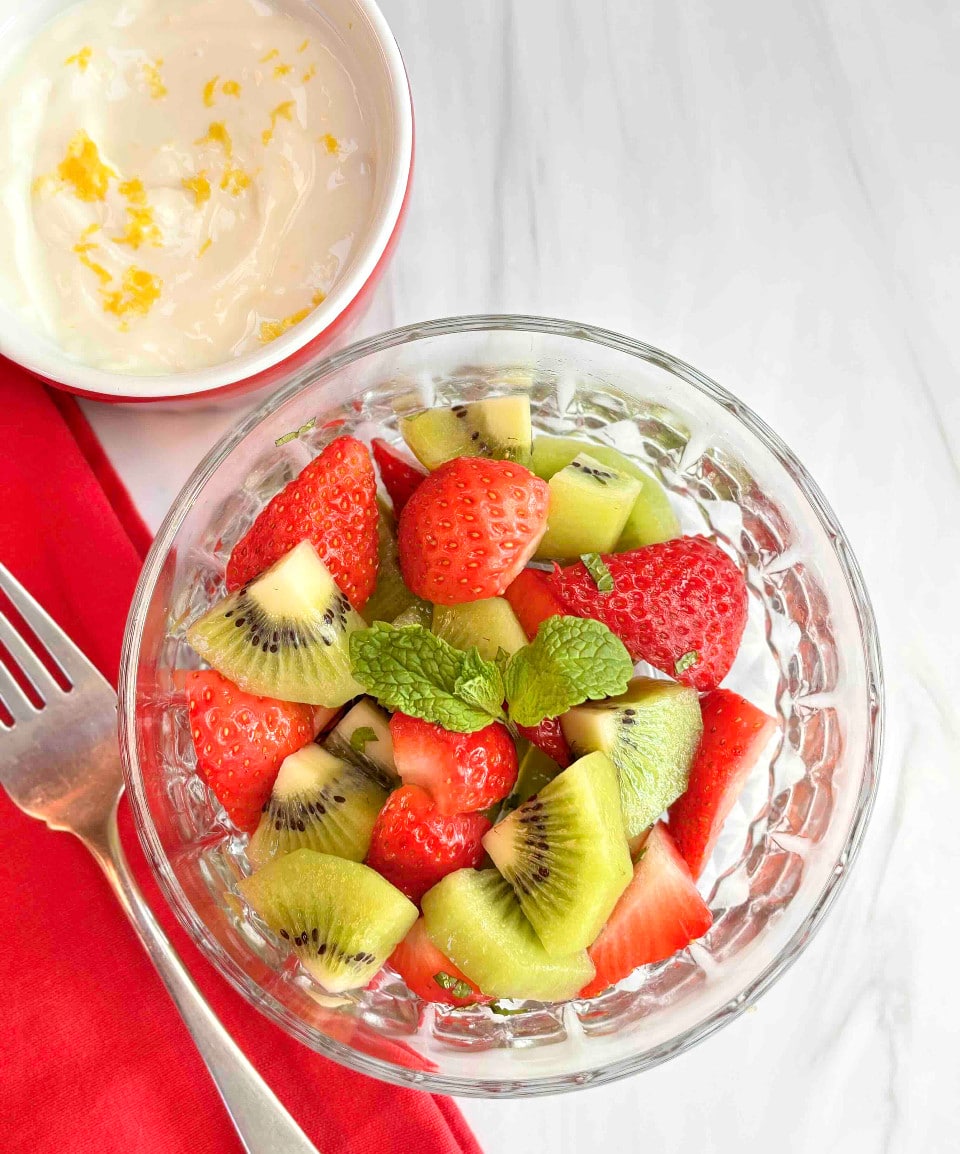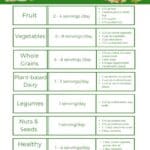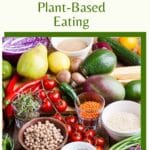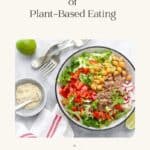Have you ever wondered if the way you eat could be the key to feeling better, aging gracefully, and even managing some of the most common health challenges?
Plant-based eating is gaining popularity for good reason—it’s not about giving up your favorite foods but about adding more of the good stuff: vibrant fruits, hearty vegetables, and nutrient-packed grains and beans. As a dietitian – I’m excited about finding ways to incorporate more plant-based meals, too!
Whether you’re curious about the health benefits, looking for ways to eat more mindfully, or just want to shake things up a bit, a plant-based diet might be a great option for you.
Let’s dive into what a plant-based diet is, what the benefits are, and what you can do to start following this eating plan that might have a big impact on your health.
Please note: This post contains affiliate links. As an Amazon Associate, I earn from qualifying purchases.
Table of Contents
What Is Plant-Based Eating?
Plant-based eating is really just making sure plants are the focus of your plate. It’s about enjoying more of the vibrant, nutrient-packed fruits, vegetables, nuts, seeds, grains, and legumes.
You might want to think of it as a “plant-forward” or “plant-focused” way of eating—not about eliminating animal foods entirely but about finding balance by making those delicious plant foods the star of the show.
So, what does that look like? Meals full of fruits, vegetables, whole grains, legumes, nuts, seeds, and soy-based foods.
While it might sound similar to a vegetarian diet, plant-based eating doesn’t mean cutting out animal foods altogether. Instead, it’s about eating smaller portions of animal-based foods or enjoying them less often, with an emphasis on the abundance of plant-based options.
If you’re familiar with the Mediterranean diet, it’s a great example of this style of eating. Meals are rich in colorful vegetables, hearty grains, and healthy fats, with animal foods playing a smaller, supporting role. (Curious about the Mediterranean diet? Check it out here!)
Now, what about protein? Isn’t it important? Absolutely! And the good news is that plant-based diets are packed with protein-rich options. Foods like beans, lentils, peas, nuts, seeds, soy, and even certain vegetables and whole grains collectively provide all the protein your body needs.
By shifting the focus to plants, you’re not only fueling your body with essential nutrients but also adding color, variety, and flavor to your meals.
What are the Benefits of Eating a Plant-Based Diet?
While it may seem trendy, there are plenty of excellent reasons to work on eating a more plant-based diet. A plant-based diet is filled with nutrients, tends to be high in fiber, and lower in calories and fat than a more animal-centric diet.
Reduced Risk of Heart Disease
As the leading cause of death worldwide, finding ways to reduce the risk of heart disease is critical. We know that what we eat has a tremendous effect on our risk of heart disease as well as high blood pressure.
There are numerous reports that show that people who eat more plant foods – fruits, vegetables, grains, beans, nuts, and seeds – have lower rates of heart disease, lower cholesterol levels (especially those pesky LDL levels), lowered blood pressure, and better control of their blood sugar.
Boosting Brain Health
If you’ve been following me for a while, you already know how much I believe that what we eat greatly affects how we think, feel, and function.
Food and nutrition is really powerful!
Think about the last time you ate a heavy, greasy meal—did it leave you feeling energized, or did it have you ready to curl up for a nap? That post-meal sluggishness is a prime example of how our food choices can directly affect our brains and bodies both in the short term and over the long run.
Now imagine the flip side: foods that fuel your brain, improve your mood, and even help protect your memory as you age. This is where plant-based eating comes in.
Whether it’s reducing the risk of Alzheimer’s disease, helping you manage stress, or even setting the stage for better sleep, incorporating more plants into your meals can have a profound impact on your brain health.
A great example of this is the MIND diet—a plant-forward approach specifically designed to support brain health. Research shows it lowers the risk of Alzheimer’s and dementia, making it a fantastic blueprint for anyone wanting to care for their brain as much as their body.
Cultivating Gut Health
Have you heard the saying, “Everything starts in your gut?” Well, it’s true! The health of your gut—your gastrointestinal (GI) tract—has a huge impact on your whole body.
And if you think about it, it makes a lot of sense. Everything you eat goes through your GI tract. As the food breaks down, it sends nutrients to all the places that need them. If your gut isn’t in good shape, those nutrients can’t do their job. But there’s more to it…
Your GI tract is home to something amazing called your microbiome. It’s a community of trillions (yes, trillions!) of tiny organisms, including healthy bacteria, that live along your gut lining. These helpful bacteria don’t just break down food—they’re also busy building communication pathways with your brain, keeping your immune system strong, and even helping your metabolism stay on track.
Here’s the cool part: research shows that eating a diet rich in plants is one of the best ways to keep your microbiome thriving. The fibers in fruits, veggies, whole grains, legumes, nuts, and seeds all help feed those good bacteria, keeping your gut healthy and your whole body feeling its best.
Supporting Healthy Blood Sugar Levels
Did you know that along with high rates of heart disease, type 2 diabetes is one of the most common health challenges in the U.S.? A big part of this can be linked to what we eat and our weight. In fact, obesity is one of the biggest risk factors for developing type 2 diabetes.
The good news? What we eat has a HUGE impact on reducing our risk of type 2 diabetes—and even managing it if you’ve already been diagnosed. Research shows that shifting to a plant-forward eating pattern can make a real difference.
This means enjoying more fruits, vegetables, whole grains, legumes, nuts, and seeds while cutting back on high-fat, high-sugar, and heavily processed foods.
So, how does it help?
- Better Blood Sugar Control: Plant-based diets are naturally rich in fiber, which slows down the digestion of carbohydrates and helps keep your blood sugar steady. Fiber-packed foods like beans, lentils, whole grains, and vegetables also help reduce insulin resistance, a key factor in type 2 diabetes.
- Healthy Weight Management: Many plant-based foods are lower in calories but high in nutrients, making it easier to maintain a healthy weight—a critical step in preventing or managing diabetes.
- Improved Heart Health: People with diabetes are at a higher risk of heart disease. By following a plant-based diet, you can lower cholesterol and blood pressure, further reducing your risk.
- Lower Inflammation: Diabetes is linked to chronic inflammation, and a diet rich in plant foods can help reduce it, promoting better overall health.
One large study found that following the Mediterranean or DASH diets, which are both high in plant foods, helped reduce the incidence of type 2 diabetes.
Whether you’re looking to lower your risk or manage type 2 diabetes, adding more plants to your plate is a simple and delicious way to help.
Diminishing Menopausal Symptoms
One question I get asked all the time is, “Can eating more plants help with all the changes that come with menopause or even pre-menopause?” While there’s still a lot we’re learning, the answer seems to be yes in some areas. Here’s what we know so far:
- Reduced Hot flashes – some research found that women who followed a plant-based diet (vegan diet) had a 79% decrease in hot flashes. Even more impressive, 59% of those women reported being free of moderate and severe hot flashes after 12 weeks.
- Improved Cholesterol – There is some evidence that a plant-based diet helps lower cholesterol in menopausal women. This is great news for our heart health during this time of our lives.
- Healthier Body Composition – While maybe not dramatic or what we’d like, there is some evidence that eating more of a plant-based diet may result in a small reduction in body fat.
- Increased Bone Density – This area needs more research, but a plant-based diet tends to be higher in both potassium and magnesium. These two minerals have been associated with increased bone density and reduced fractures. For example, one observational research study found people who follow a Mediterranean diet have an 18% lower risk of hip fractures, but this was not associated with any other fracture. So more work is needed in this area.
While everyone is different, and there isn’t a one-size-fits-all answer for managing menopause. But adding more plants to your plate can be another great tool for helping you feel your best during this transition.
Supporting a Healthy Weight
Plant foods are typically high in fiber, and many contain protein, both of which are filling. By adding more plant foods, you may reduce the total amount of calories you need to feel full. This helps keep your weight stable and may help with losing a few pounds too.
The best news is that research seems to support this. People who closely follow a more Mediterranean diet tend to either lose weight or have a lower incidence of obesity.
Plant-Based Diet Pros and Cons
As you can see, there are so many good reasons for trying to eat more of a plant-based or plant-focused diet. So your biggest question might be: Are there any downsides to following a plant-based diet?
There aren’t really downsides to a plant-based diet. However, there are some things I like to make sure you consider when trying to eat more plant-based foods.
- Not all plant-based foods are healthy or good for you. Think about things like refined grains (croissants!), sweetened beverages (sports drinks), fried vegetables (tater tots!), etc. Just because it is a plant doesn’t automatically make it healthy.
- Some people may find the preparation of these foods difficult or time-consuming. It can also be overwhelming learning to prepare new foods. Look for easy recipes online, or check out a plant-based or Mediterranean diet cookbook for some inspiration. A few of my favorites are:
- The 30-Minute Mediterranean Diet Cookbook by my colleagues Deanna Segrave-Daly and Serena Ball.
- The Mediterranean Diet Cookbook for Two by my colleague Anne Dehany
- Cooking a la Heart by my colleagues Linda Hatchfield and Amy Myrdal Miller
- The MIND Diet for Two – this is my book about eating to support brain health and includes an entire chapter on plant-based meals.
- The cost of fresh produce may be high for some people. However, there are plenty of frozen, canned, and dried options available. The good news is that they’re just as nutritious as fresh.
- Time! We’ve all been there. You need something fast because you are running to a meeting or event. Or you haven’t had time to sit and plan out your meals and shopping list. This way of eating may take a little more time, especially in the beginning.
While you are getting used to this way of eating (and even once you are well on your way!), find some quick workarounds or shortcuts. Use pre-cut veggies, a premade salad kit, or a meal kit from the store or home delivery company. These will help cut down on your prep and cook time. The fewer hurdles you need to jump through to get healthy meals on the table, the easier it will be to stick to!
- Digestive issues. No one likes feeling bloated or gassy. However, sometimes making dramatic changes to our diet can lead to some well, uncomfortable, and embarrassing digestive issues.
Eating more plants increases our fiber intake, which is great. Fiber helps fill us up and keeps our GI tract moving and healthy. But it also comes with some side effects, especially if you go from zero to sixty quickly.
Fibrous foods are harder to digest and, as a result, can cause an increase in gas and bloating. To help minimize the discomfort, it’s best to go slow! Give your GI tract time to get used to the change. Add an extra serving or vegetables or beans once a day. When you are used to that, add another. Adding fibrous foods slowly gives your GI tract time to adjust. Over time you’ll be able to digest those foods more easily.
You can also try including foods that contain probiotics, like yogurt and kefir. Some people and some research have found that these foods help reduce gas and bloating.
What Foods Should You Eat More of on a Plant-Based Diet?
While the basics like fruits and vegetables probably are what come to mind for most people, there are a variety of delicious foods today that are plant-based. From plant-based milk and yogurt to bean and mushroom burgers, the options are almost endless. Here’s a general guide to start eating more plant-based foods.
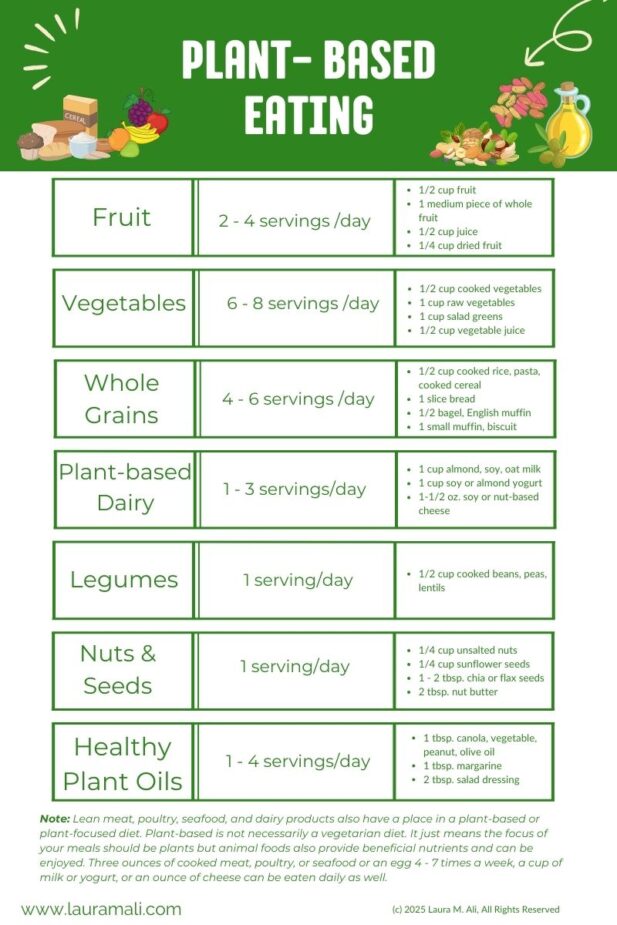
Download my plant-based pantry and refrigerator essentials list to stock up on essential foods to keep on hand.
Tips for Eating More Plant-Based
Eating a plant-based diet doesn’t mean you need to completely overhaul how you eat. In many cases, it’s best to start with small things. If this is completely new, try one or two of these to start:
- Choose whole-grain bread instead of white.
- Use brown rice instead of white rice.
- Add a side salad to your dinner meal – even if you have another vegetable on your plate!
- Add some chopped apples or peaches to your morning oatmeal.
- Mix some chopped spinach into your scrambled eggs.
- Add a can of beans to your vegetable soup for some extra protein.
- Toss some beans into your salad.
- Add some chopped nuts to your tuna or chicken salad.
- Try a meal delivery kit service for new and creative recipes. Purple Carrot, Sunbasket, Hello Fresh, and Green Chef are a few good options.
Final Thoughts
Adding more plant-based foods to your diet is one important and relatively easy thing you can do to improve your health. If this is new to you, start slowly. Try adding a serving of legumes twice a week and an extra serving of vegetables daily. Then, gradually work on replacing one animal-based meal a week with one that is more focused on plants. Or decrease your portion of meat and add extra vegetables and whole grains at least every other day.
Download my plant-based essentials pantry list here and start planning your plant-based eating plan today. And track your progress with my daily meal planner here.

